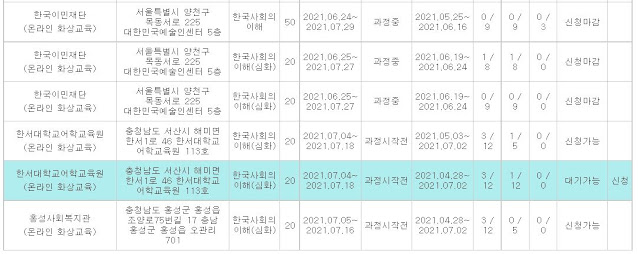Irregular Korean passive verbs with (-이/히/리/기) suffix = to be V-ed
Usage:
- Irregular passive verbs with (-이/히/리/기) suffix are used to express a passive statement when the subject's action occurs because of an action directly/indirectly performed by someone else/something = to be V-ed
- The irregular passive verbs must be memorized (similar to irregular verbs in English)
List of typical -이/히/리/기 passive verbs:
이: Verb stems that have no 받침, or verb stems with a 받침 that doesn’t change it’s sound when it comes before ㅎ (usually ㅎ, ㄲ, ㅍ).
- 바꾸다 = to change –> 바뀌다 = to be changed
- 보다 = to see –> 보이다 = to be seen
- 놓다 = to place –> 놓이다 = to be placed
- 섞다 = to mix –> 섞이다 = to be mixed
- 덮다 = to cover –> 덮이다 = to be covered
- 쓰다 = to use/write –> 쓰이다 = to be used/written
히: Verb stems with 받침 that does change it’s sound when it comes before ㅎ (usually ㅂ, ㄱ, ㄷ, ㅈ).
- 잡다 = to catch –> 잡히다 = to be caught
- 밟다 = to step on –> 밟히다 = to be stepped on
- 막다 = to block –> 막히다 = to be blocked
- 닫다 = to close –> 닫히다 = to be closed
- 잊다 = to forget –> 잊히다 = to be forgotten
- 먹다 = to eat –> 먹히다 = to be eaten
리: Verb stems with ㄹ 받침, or irregular verbs that change their 받침 to ㄹ in most conjugations (듣다 –> 들어).
- 열다 = to open –> 열리다 = to be opened
- 듣다 = to hear –> 들리다 = to be heard
- 자르다 = to cut –> 잘리다 = to be cut
- 뚫다 = to pierce –> 뚫리다 = to be pierced
- 팔다 = to sell –> 팔리다 = to be sold
- 밀다 = to push –> 밀리다 = to be pushed
- 풀다 = to untie –> 풀리다 = to be untied
- 물다 = to bite –> 물리다 = to be bite
기: Verb stems with other 받침 that doesn’t change it’s sound when it comes before ㅎ (usually ㅁ, ㄴ, ㅅ, ㅊ).
- 담다 = to fill –> 담기다 = to be filled- 잠그다 = to lock –> 잠기다 = to be locked- 안다 = to hold –> 안기다 = to be held- 씻다 = to wash –> 씻기다 = to be washed- 쫓다 = to chase –> 쫓기다 = to be chased- 끊다 = to cut –> 끊기다 = to be cut off
Structure:
1. N2이/가 N1에/게 V-이/히/리/기 (passive) <= N1이가 N2을/를 V (active)
E.g.
범인이 경찰에게 잡혔어요.
The criminal was caught by the police.
2. N이/가 V-이/히/리/기 (passive) <= N을/를 V (active)
E.g.
제 전화번호가 바뀌었어요.
My phone number has changed.
3. N2이/가 N1에 V-이/히/리/기+아/어 있다 (passive) <= N1에 N2을/를 V (active)
E.g.
시계가 벽에 걸려 있어요.
The clock is hanging on the wall.
Examples
1. 아이가 할아버지에게 안겼어요. (피동) -- 아이가 인형을 안아요. (능동)
The child was held by the grandfather (Passive verb) -- The child hugs a doll. (Active verb)
2. 문이 열렸어요. / 열려 있어요. (마리 씨가 문을 열어요.)
The door is opened./ the door is open. (Mary opens the door).
3. 바다가 보여요 (나는 바다를 봐요).
The beach is seen by me (I see the beach).
4. 주소가 바뀌었어요 (나는 주소를 바꾸었어요).
The address was changed (I changed my address).
5. 도둑이 경찰에게 잡혔어요 (경찰이 도둑을 잡았어요).
The thief was arrested by the policeman (The policeman arrested the thief).
6. 그 책은 많은 사람들에게 읽힙니다 (많은 사람들이 그 책을 읽습니다).
That book is read by lots of people (Lots of people read that book).
7. 밖에서 음악 소리가 들려요 (음악 소리를 들어요).
The music sound is heard outside. (I hear the music sound).
8. 요즘 이 잡지가 잘 팔려요 (잡지를 팔아요).
This magazine is sold very well these days.
9. 전화가 끊겼어요 (전화를 끊었어요).
The telephone was disconnected.
10. 쥐가 고양이에게 (cat) 쫓겨요. (고양이가 쥐를 쫓아요).
A mouse is chased by a cat. (A cat chased a mouse).
"Special passive verbs" describe state of object: V-이/히/리/기 +아/어 있다
1. 문에 3급반이라고 쓰여 있어요.
The level 3 class is written on the door.
2. 교실 문이 잠겨 있어요.
The classroom's door is (being) locked.
3. 창문이 닫혀 있어요.
The window is close.
4. 가방이 열려 있어요.
The bag is open.
5. 책상 위에 예쁜 꽃병이 놓여 있어요.
A flower vase is put on the table.
6. 휴게실에 그림이 여러 개 걸려 있어요.
Many types of drawings is hung in the lounge.
Label: Grammar Lv2


















